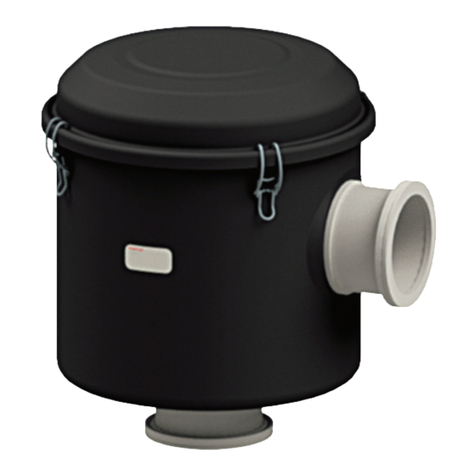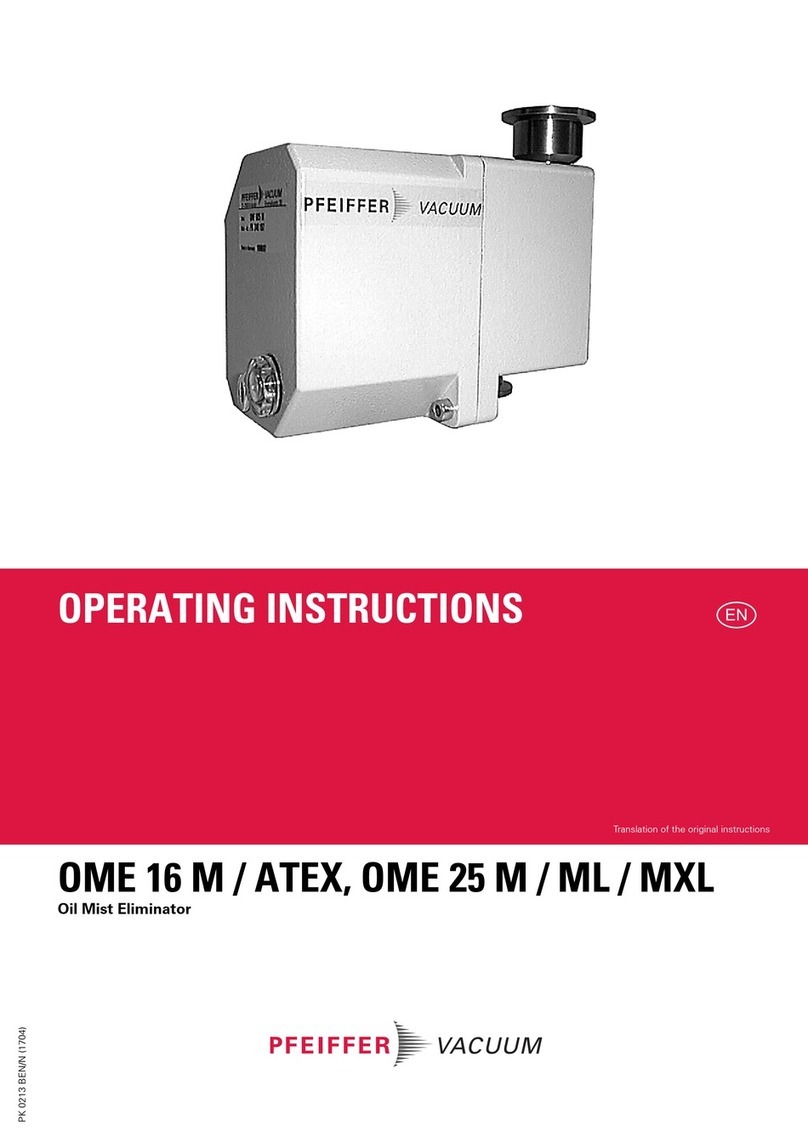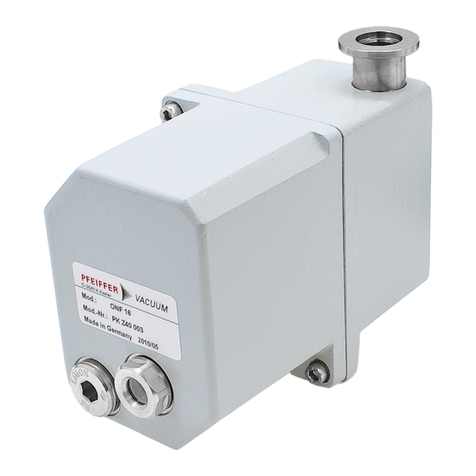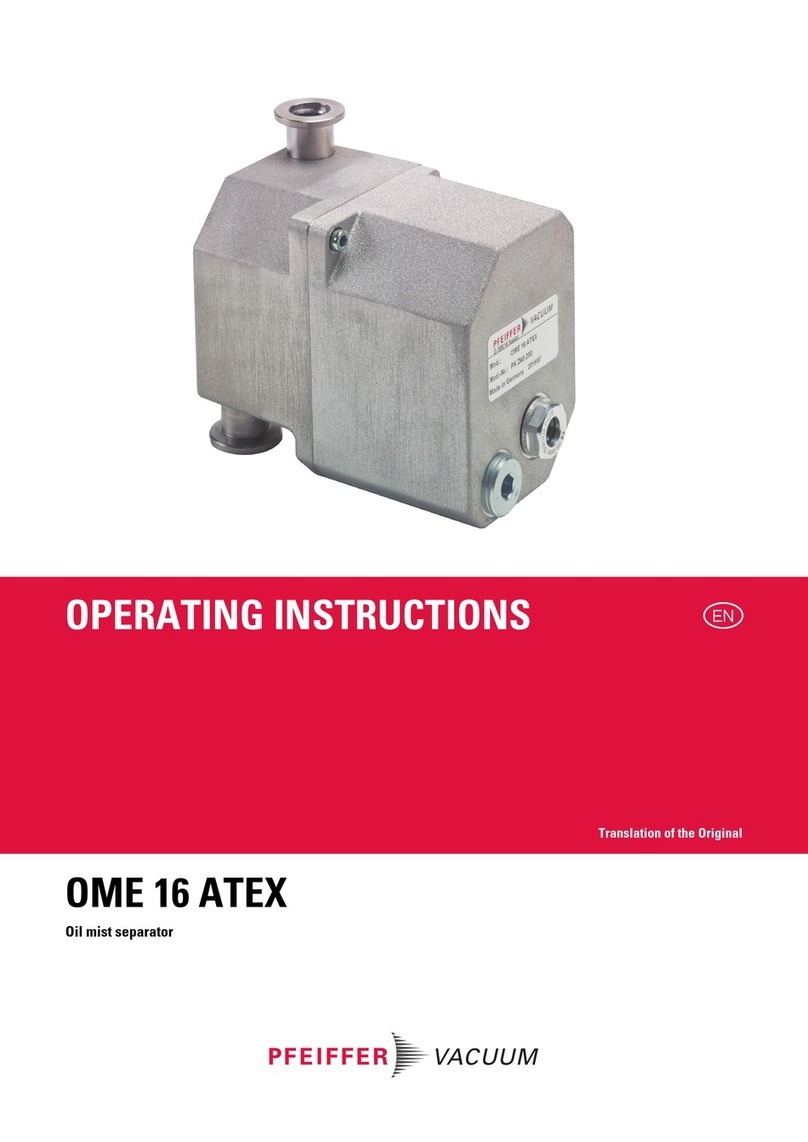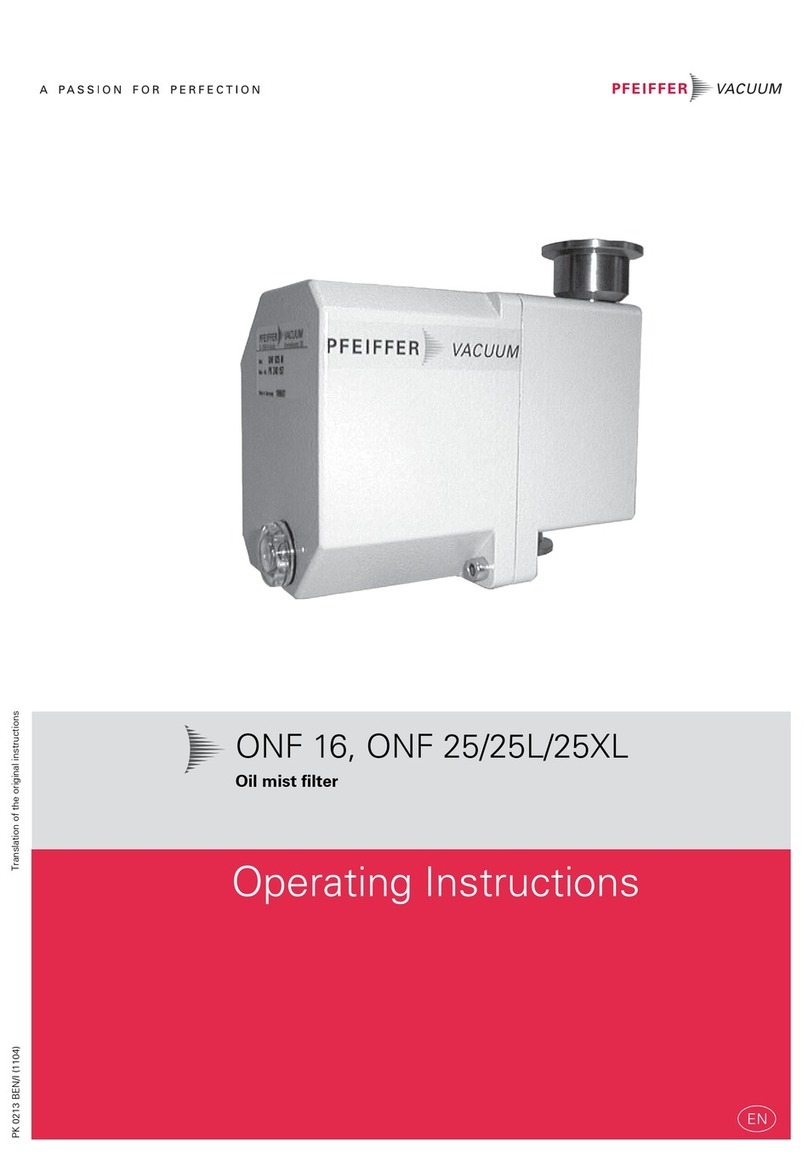
10
Installation
5.3 Installing the operating fluid return line
Retrofit kit: PK 005 950 -T
Prior to conversion work check the pump's ultimate pressure to get a reference value.
For this purpose, measure the ultimate pressure at the intake side with a vacuum gauge
(e.g. Pirani).
Turn off the vacuum pump, vent to atmospheric pressure and allow to cool.
Screw out the operating fluid drain screw 55; pay attention to the O-ring 64.
Drain off operating fluid.
Separate the operating fluid from the condensate.
– If the drained operating fluid is free of contamination, it can be reused.
Screw in operating fluid drain screw 55; pay attention to O-ring.
Unscrew screws 45 and remove cover 2 with the filter elements from casing 100, col-
lect remaining operating fluid and clean the parts if necessary;
– pay attention to flat seal 3.
Unscrew locking screw 54.
Screw reducing piece 25 with O-ring 63 into cover 2 from the outside.
Lightly lubricate sealing nipple 37 and manually press into the hole in cover 2.
Push cylinder bolt 38 into floating support 35.1.
Insert the floating support and cylinder bolt 38 into the groove in cover 2 and mount
clamping plate 36 using screw 48.
– Floating support 35 should be able to move slightly.
Replace cover 2, being careful with flat seal 3.
Unscrew and remove locking screw 142 on the support.
Screw reducing piece 25 with O-ring 63 into connection 4 on the pump support while
ensuring that the sealing surfaces are clean.
Fit operating fluid return line 27 onto the two reducing pieces using hollow screws 28,
being careful with O-rings 67.
–Notice! Do not remove the spiral hose at the operating fluid return line 27; it serves
as a vibration damper.
Check the pump's ultimate pressure to ensure a leakproof assembly of the operating
fluid return line;
– compare the measurement result with the previously determined ultimate pressure.
Fill in additional operating fluid in OME in order to ensure the return of operating fluid.
NOTICE
Make sure that the return for the operating fluid is working properly.
The operating fluid can only be sucked out and returned when there is a minimum about
of operating fluid in the oil mist eliminator.
If necessary, top up with operating fluid in order to ensure the return of operating fluid
at the start of the evacuation phase.
Pour the operating fluid slowly into the outlet flange of the oil mist eliminator until it
can be seen in the sight-glass.
CAUTION
Escaping operating fluid!
Slip hazard and workplace contamination from spilled operating fluid.
Place suitable container underneath and collect escaping operating fluid.

